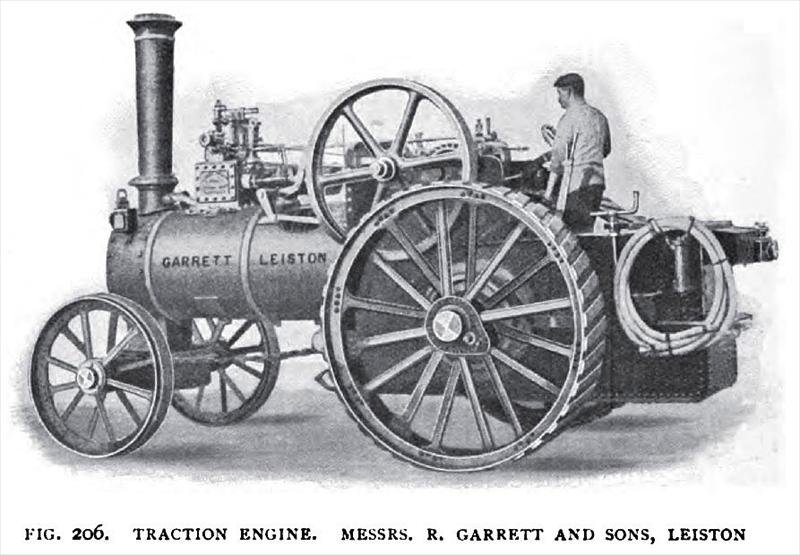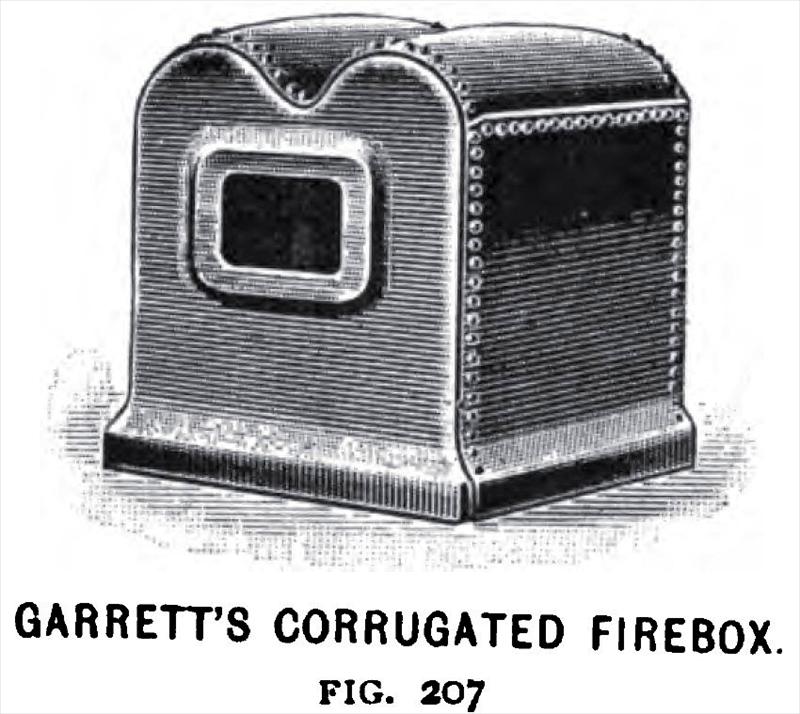|
Title: |
1904 Article-Richard Garrett & Sons, Steam Traction Engine |
|
Source: |
English and American Steam Carriages and Traction Engines 1904 pg 336 |
|
Insert Date: |
8/17/2011 1:16:33 PM |
|
MESSRS. R. GARRETT AND SONS — The great demand which exists for a good traction engine has induced the above firm to devote special attention to the production of an engine in which are embodied all recent improvements. Fig. 206 represents a single-cylinder general-purpose traction engine. The chief characteristic feature is the corrugated fire-box, Fig. 207, introduced in 1876. This fire-box has been extensively used. The makers claim the following advantages for it:— Elasticity of construction means durability, and as the crown of this fire-box, owing to its shape, requires no staying, it is free to expand and contract without fear of straining or cracking. Apart from durability, its camber or arch-like construction, is the source of far greater strength than is found in flat-topped fire-boxes. In addition to these two good points of increased durability and strength, this fire-box has also the advantage of extreme efficiency, as, owing to its form, it contains more heating surface than any other fire-box of equal grate area; and it must be remembered that the experiments of Monsieur Petiet have proved that about one half of the total evaporation of a boiler takes place in the immediate vicinity of the fire-box. Besides strength, durability, and efficiency, absence of incrustation and freedom from the collection of mud on the crown are two very noticeable qualities of this firebox, and must be experienced to be thoroughly appreciated. The natural expansion and contraction are alone sufficient to prevent incrustation, as any thin coating of mud or scale which may collect is immediately broken up on the next occasion of a change in temperature (with the consequent alteration in area and form of crown plate), and carried away by the violent ebullition which takes place above this—the hottest—region of the fire-box, to settle ultimately in a specially designed mud-pocket from which it is easily removed. On the top of the cylinder are the starting-valve and the throttle-valve case, which are so arranged that the slide-valve can be examined whilst the engine is under steam. A Mollerup oil-press is provided, by means of which the oil is forced against the steam pressure into the valve chest, where it intermixes with the steam, and lubricates the valve faces and piston. The governors are of the Pickering type, acting direct upon a balanced cylindrical valve. The governor is fixed upon the cylinder: it and the equilibrium throttle-valve can be taken out for inspection while the steam is up. It will be seen that the engine is of the four-shaft type, the advantages of which have been explained. A winding-drum and steel rope are included; from the position of the rope rollers it will be seen that the rope is paid off from the top of the drum. The feed-pump inlet is bolted to a steel-faced connection, provided with a cock between the check valve and the boiler. A platform running the whole length of one side of the boiler barrel is supplied, whereby oiling and cleaning are greatly facilitated. Before leaving the works the engines are tried in the usual manner; the boilers are tested by hydraulic pressure to 240 lbs. per square inch, and by steam pressure to 150 lbs. for a regular working pressure of 135 lbs. per square inch. |
|
 1904 Richard Garrett & Sons, Steam Traction Engine
1904 Richard Garrett & Sons, Steam Traction Engine
 1904 Richard Garrett & Sons, Corrugated Firebox
1904 Richard Garrett & Sons, Corrugated Firebox
|
|